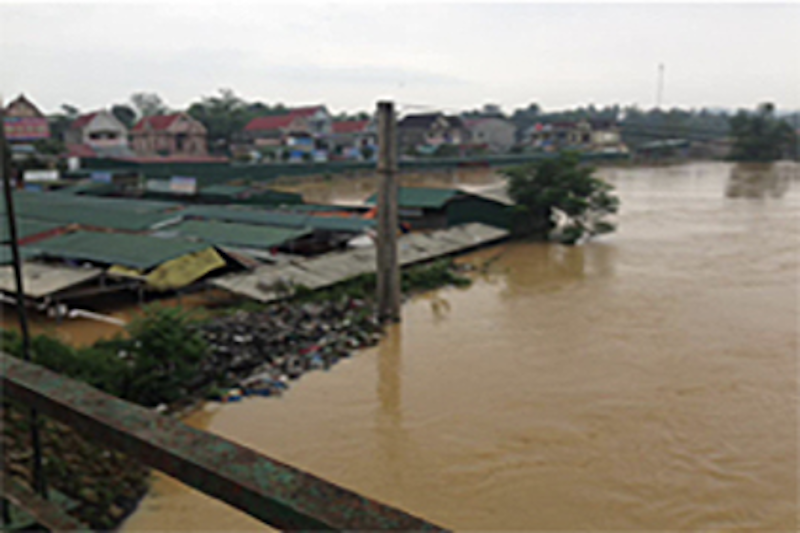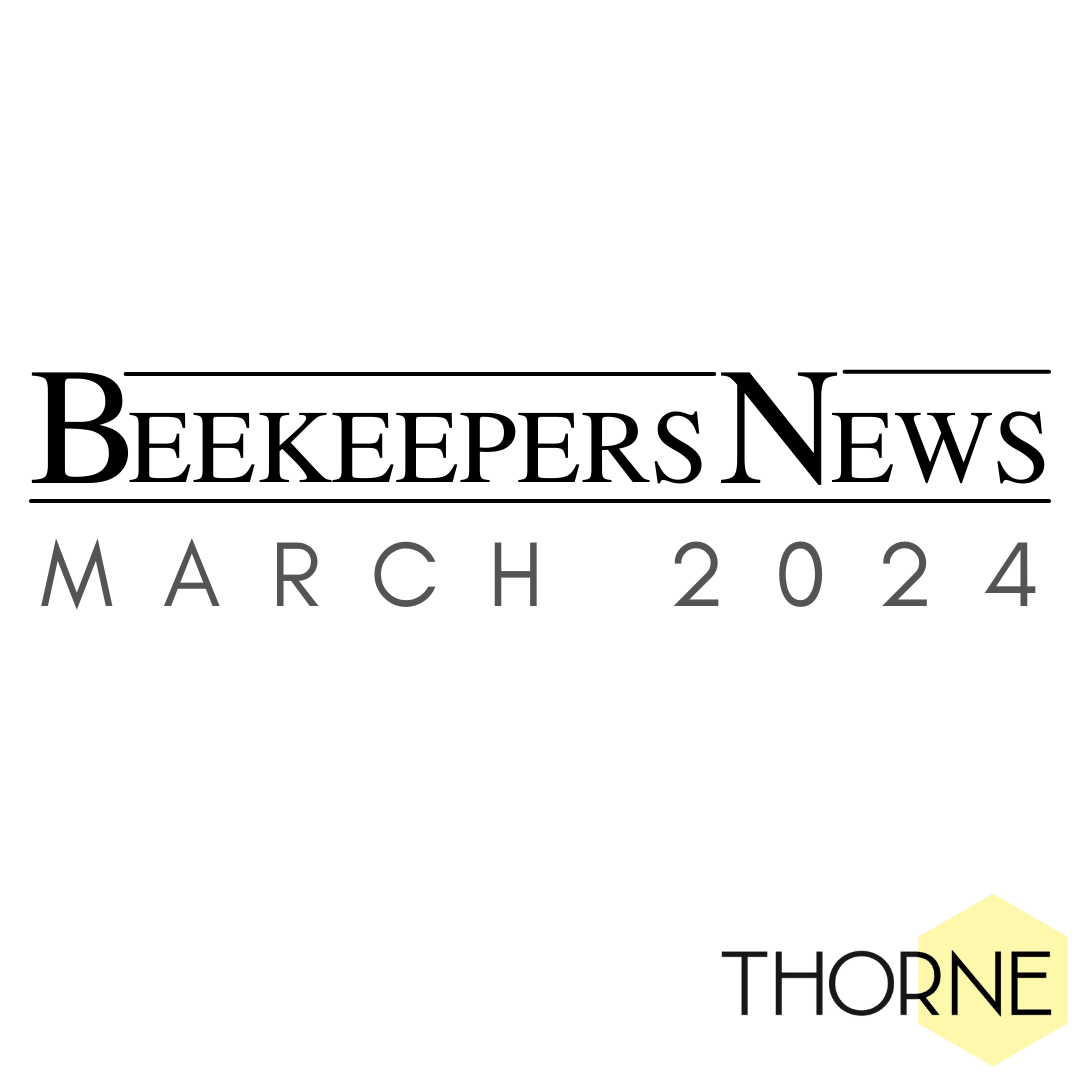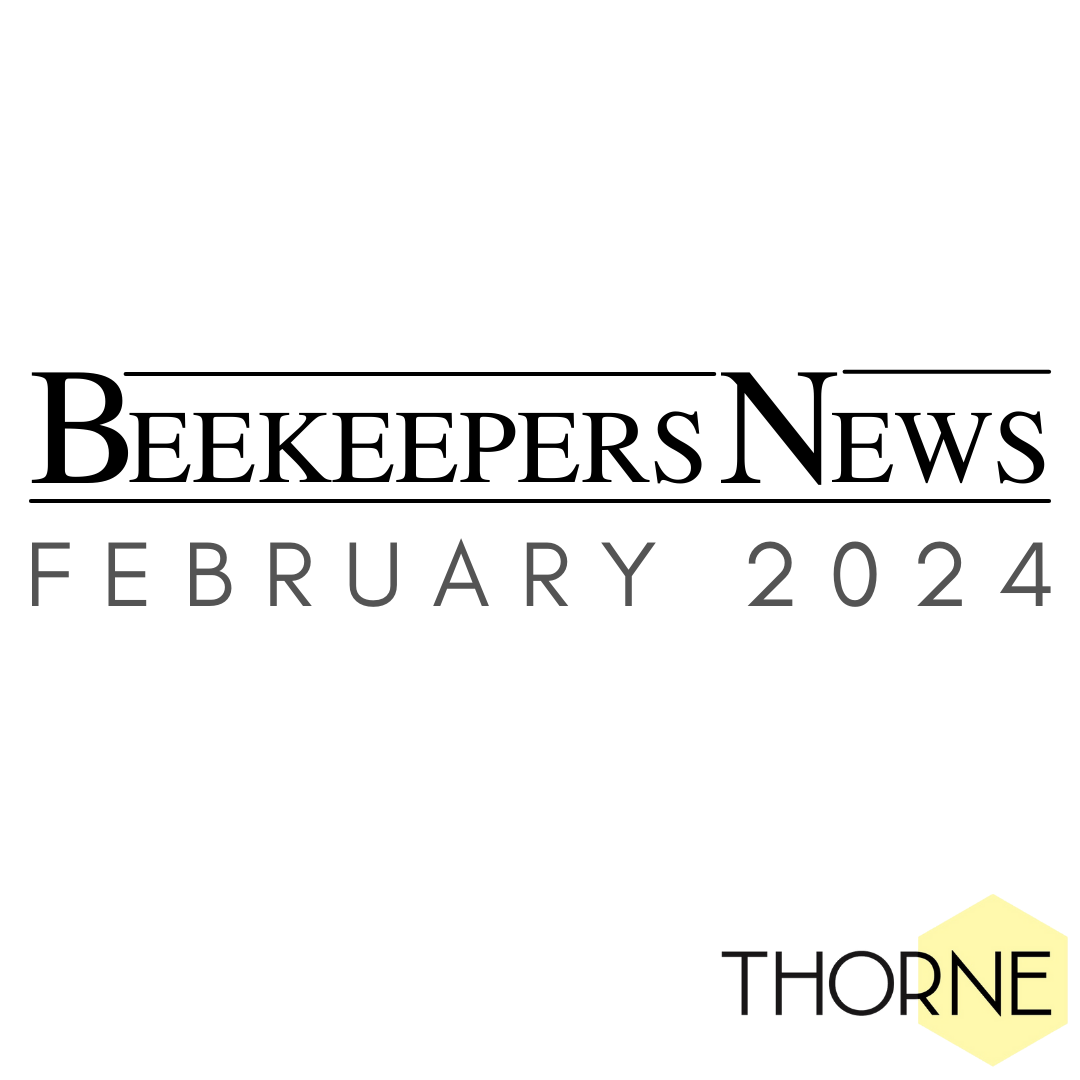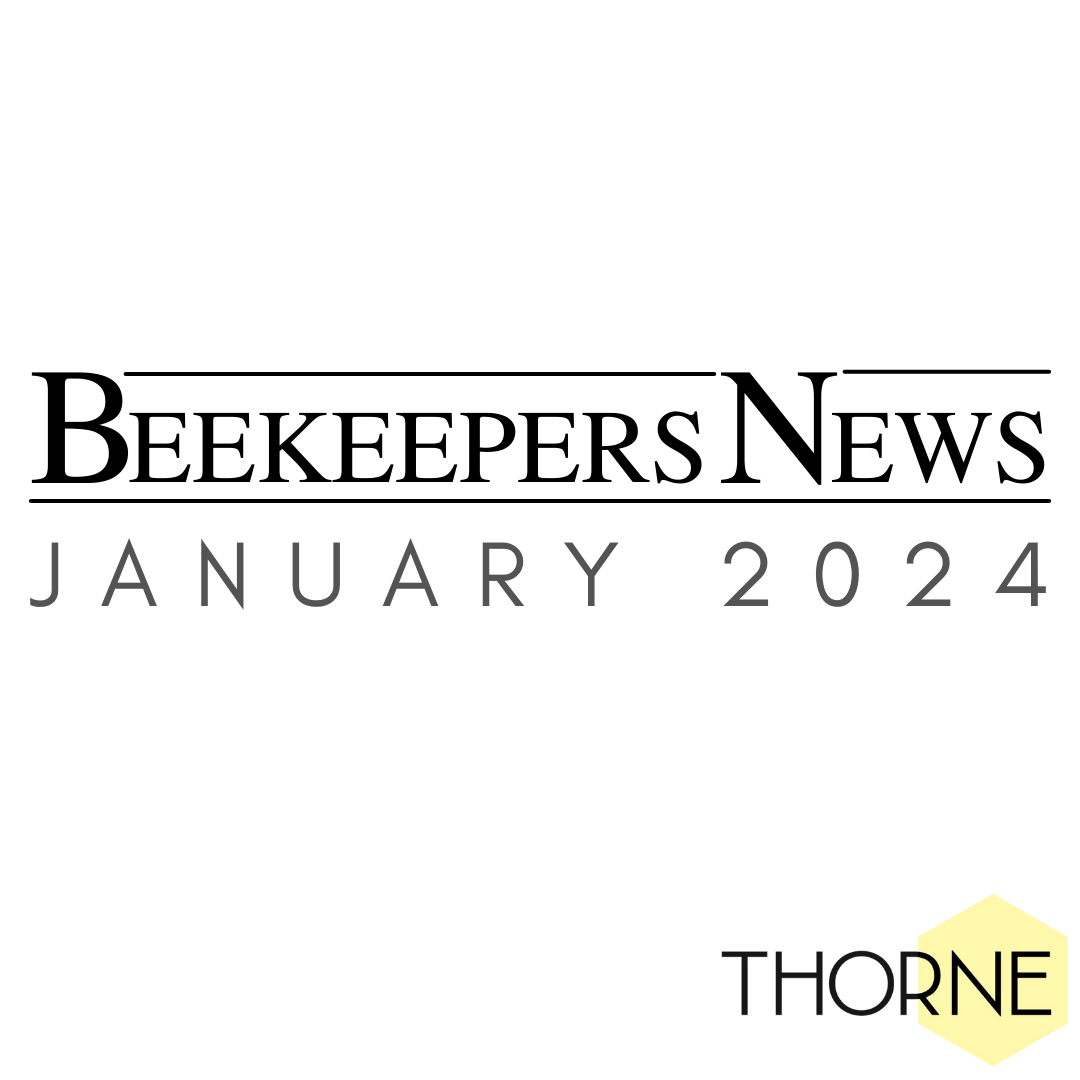April Roundup
Well the season has started with a bang and the unseasonably warm spring weather have certainly got the bees flying and working hard. We are also working very hard, trying to get your orders out to you in record time!
Equipment Focus
Asian Hornet trap and attractant
Following on from the discovery of Asian Hornets in the UK we are pleased to be supplying the highly successful Asian Hornet trap or Vespa-Catch. You can purchase them here.
The trap is a simple and effective way to trap hornets and not your bees. For more information go to www.veto-pharma.com
Thoroughly mix the natural attractant (included) with sugar and water. Pour this into the yellow cup and attach the lid and hanger. The yellow colour of the cup is important and is known to attract the Asian Hornets. Ideally hang the trap 1.5m to 3m from the ground. Refresh the attractant every three weeks or when the cup is full!
Attractant is available separately as 5ml sachets or in litre bottles.
Please contact the National Bee Unit, www.nationalbeeunit.com, if you spot or trap the Asian Hornet.
Ask our Expert
Please email us at sales@thorne.co.uk if you have a question for our experts.
A plea to Save Our Drones
For years in the literature I have been reading that a colony comprises (in the summer) about 30,000 bees (workers) a few hundred Drones, and of course one Queen.
If you look into the composition of wild colonies you will find the mix is quite different… A wild colony supports between ten and twenty percent Drones, rather than the one or two percent we allow them to raise in our “managed” hives.
DN4 (or Hoffman) brood frames discriminate against Drone production. The spacing of the frames (that are usually filled with worker foundation), only allow a single worker space between one frame and the next. The worker bees will produce some drone, usually in the gap on the bottom of frames, or in the bottom corners of brood frames where there wax in the corner fades out. You will usually find that when you pull up a frame, if you don’t use a dummy board, that you have knocked off the cell cappings exposing and damaging the Drone larvae.
Ever since the advent of Varroa we have cut out sealed Drone brood as a Varroa control. So, the few Drones we have left in our colonies are preferentially predated by the Varroa, because of the longer pupation time, allowing the Varroa an extra brood cycle. This means that the Drones we produce tend to be mal-nourished, under developed, and probably carrying a heavy viral load… and we wonder why our Queens aren’t getting mated properly?
The Queens and Drones have two differing mating strategies. Both are about the same size and can fly for about half an hour… The Drones to maximise their chances of catching a Virgin Queen tend to fly to the nearest DCA (Drone Congregational Area) a couple of minutes down the road, to maximise their time in the DCA. If they are successful... they don’t come back. If they are unsuccessful and run low on fuel they return to the hive to refuel and go out again. The Queen to avoid incestuous matings will fly ten minutes down the road to a DCA (don’t ask me how she knows where it is!), losing any of her sons in the process, she can get mated 10-20 times in a couple of minutes, before returning to the hive.
If I put a sheet of drone brood foundation in each of my hives, I can bring the drones up to 9% ish… I need to put a wide spacer on the frame on either side of my Drone brood, and a standard end on the Drone comb… this introduces an extra bee space for the Drone cappings, which protrude proud of the standard comb. Of course none of my drones will benefit my Queen mating’s, Only my neighbouring bee keepers queens. But if we don’t start improving the Drone stock we will continue to have badly mated Queens, failing in the first year or over winter, more Drone layers giving us issues in the spring. Try and give your Drones a chance, and see if it improves the hives temperament, there is some evidence that it can reduce swarming. And some of the extra drones can be sampled to give an accurate measure of the true Varroa levels in your hive.
Bees for Development Update
BfD Ethiopia
Last month we surveyed new beekeepers and their experiences when selling honey. 85% said they were satisfied with the sale, because they received a good price and the trader used an accurate weighing balance. The new beekeepers reported also that the traders gave them feedback: traders prefer uncrushed fresh honey comb, and will pay less for honey in dark combs. About half the new beekeepers were told to ‘produce more and I will buy more’, and one trader even agreed to increase the price per kg, if a beekeeper could bring more than 80 kg!
Flood victims Vietnam
Thanks to the generosity of beekeepers, we are this month sending £12,500 to destitute beekeepers in the North of Thailand who suffered devastating floods late last year. Our partner organisation in Vietnam, The Bee Research and Development Centre, is taking responsibility for distributing the replacement bee colonies and hives to beekeeping families affected by the floods.
National Honey Show News
The National Honey Show and Photography
Spring and summer offer the best opportunities for insect photography, and with interests like ours, especially opportunities for bee photography. There is always a spectacular display of photographs and slides within the “Photographic, Microscopy, Videos and Essay” classes at The National Honey Show. Anyone can enter, beekeeper or not, young or old, from the UK or anywhere in the world. Copyright remains with the exhibitor, so do have a go. For those interested in learning more before dipping in, The National Honey Show usually holds at least one photography workshop, this year’s are planned to be on “Photography for Fun and Profit” and will be held on the Friday and again on the Saturday afternoon. Workshops are popular, need to be pre-booked and bookings open on 1st September.
The National Honey Show: just 'National' or becoming more 'International'?
We have many visitors, including some of our lecturers, from far and wide. We love to welcome all of you as visitors, as trade exhibitors and as competitive exhibitors. There are entry classes open to the world subject to import restrictions relating to hive products, but no restrictions on other classes such as craft or photography. There is no other show quite like The National Honey Show and
The National Honey Show: just 'National' or becoming more 'International'?
We have many visitors, including some of our lecturers, from far and wide. We love to welcome all of you as visitors, as trade exhibitors and as competitive exhibitors. There are entry classes open to the world subject to import restrictions relating to hive products, but no restrictions on other classes such as craft or photography. There is no other show quite like The National Honey Show and all visitors are impressed by the amazing display of exhibits and traders throughout the vast hall. If you are in the UK at the end of October and can make it, do come along, you won’t be disappointed.
Do come along and find out what it’s all about, and to get the most from your visit, check the programme in the Schedule to plan your day(s). www.honeyshow.co.uk/lectures-and-workshops
The National Honey Show
26 to 28 October 2017, Sandown Park Racecourse, Esher, KT10 9AJ
www.honeyshow.co.uk
Upcoming Events
Summer is full of events. View all the courses near to you here. Below is a selection at Thorne HQ.
• An Introduction to Beekeeping Course | Saturday 24th June at our factory at Rand in Lincolnshire
• Aspects of Queen Rearing Course | Saturday 8th July at our factory at Rand in Lincolnshire
• An Introduction to Bee and Insect Photography | Saturday 22nd July at our factory at Rand in Lincolnshire





